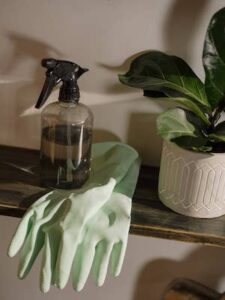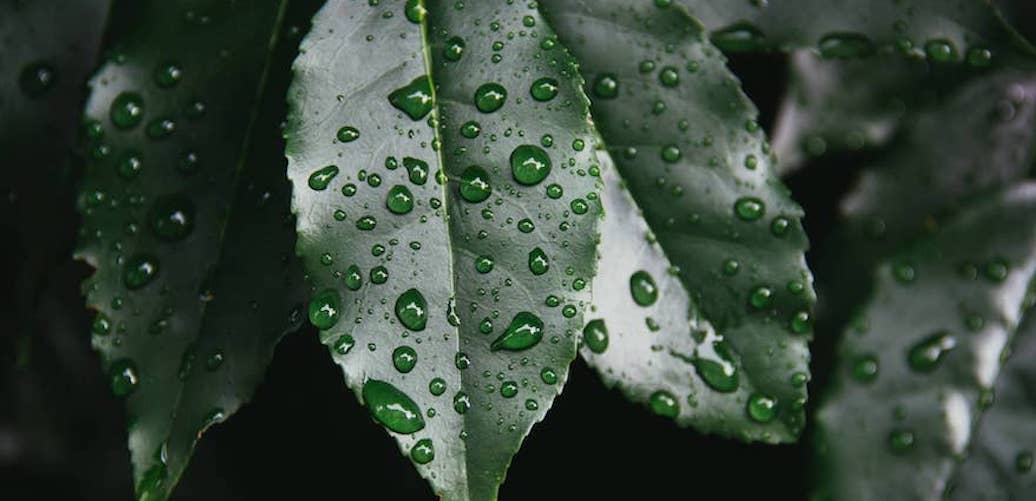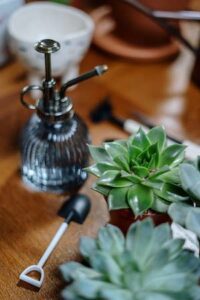If you’re a recent plant parent, you are probably looking at the best ways to look after your plants and ensure they have the best possible level of care at all times.
Many people are divided about the effectiveness of misting, but a lot of people believe it helps, and enjoy spending some extra time with their plants.
So, can you mist your plants everyday?
You can mist some of your plants every day, but you should take certain factors into account, like the existing humidity levels in your home, your plant’s humidity requirements, the surrounding temperature, and your own time commitments.
It is critical you understand all these factors. so we’ll go into more detail shortly:
- Best Universal Plant Mister for Any Plant- TACKLIFE Plant Mister
- A More Affordable Solution (Best Spray Bottle) - FANHAO Spray Bottle
1) Misting Isn’t Good For All Plants
While most plants will love being misted and having greater humidity levels surrounding their leaves, not all plants will appreciate it, and some will actively suffer if you mist them.
Plants that famously dislike being misted include:
- Piggyback plants
- African violets
- Succulents
- Stromanthe
- Cacti
Avoid misting any of these, and always check what your plant’s requirements are before you start misting them; just because most like it doesn’t mean that they will all thrive!
2) You Can Mist Too Much
Misting your plants too much will damage even the mist-lovers, and can attract pests or – again – contribute to rotting. If leaves stay wet for extended periods, they may start to grow fungi.
If any of this damage happened to you already, you can read my article about how to get rid of mold on plants or you can check out this article about keeping roaches away from your houseplants if that’s your case.
You need to pay attention to the surrounding air and the plant’s humidity.
If the air is already damp and the plant still shows signs of your last misting, don’t mist again. If the leaves are starting to look a little crispy at the edges, it’s definitely time to mist.
You will find that you have to do more regular misting during dry weather, especially if this is coupled with heat. In winter, and in cool weather, you can reduce how often you do this.
3) It’s Possible To Mist From Below
If you have a plant with sensitive leaves, don’t spray on or near the leaves. Instead, you can lightly spray the surface of the soil, allowing the water to evaporate up and provide your plant with the humidity it craves.
You can also set your plant in a dish of water, but use stones to lift the pot above the surface of the water.
As the water slowly evaporates, it will add to the humidity in the air, and the plant will benefit without having to touch the water directly.
4) Grouping Plants Helps Humidity
If you want to increase humidity levels, try grouping your plants together. They will trap humidity and also create it, making a little damp bubble that they can all enjoy together.
However, don’t overcrowd your plants; you still need to allow air to circulate freely.
5) Put Plants In The Bathroom
Keeping your plants in the bathroom is a great way to naturally mist them as long as it’s light enough for them.
They will have access to the bath or shower steam on a regular basis, and if you do need to mist them, you aren’t likely to damage any surrounding furnishings, so you won’t have to move plants around as much.
6) Brown Leaves Are A Bad Sign
If you notice your plants are getting brown leaves and the edges are starting to curl, it may be a sign they are not getting enough humidity.
This is most likely with plants that need high levels of humidity, such as tropical plants. Ordinary houseplants will usually manage without misting (though most enjoy it!).
7) Different Plants Like Different Settings
Your plants won’t all enjoy the same sort of misting. Some prefer a very fine mist to settle gently on their leaves, while others like to be properly dampened, as though rained upon.
If you can adjust the settings on your spray, find out what different plants enjoy and mist accordingly. If your spray isn’t very adjustable, you can try standing further from the plants, though you may need to clean up any spilled water.
8) Misting May Help Reduce Over-Watering
If you’re worried that you’re going to end up over-watering your plants, try misting them instead. This might help to reassure you that they’re getting enough to drink without having to fill the trays every time you pass.
Gently mist the soil so that it is damp, and reduce your watering accordingly.
9) Use Rainwater If Possible
Rainwater is better for your plants, especially if you live in an area with hard water. It won’t have lime or chemicals in it, and it’s exactly what they’re used to. Put a bucket out to collect rainwater, and you’re all set!
How To Mist Your Plants Effectively
 Misting your plants is quite straight-forward, but there are some tips and tricks that might help your plants get the most out of the misting and help you protect your furniture.
Misting your plants is quite straight-forward, but there are some tips and tricks that might help your plants get the most out of the misting and help you protect your furniture.
Here’s how to mist your plants effectively:
- Fill your spray bottle with tepid water.
- Put your plant somewhere that the spray won’t land on anything moisture-sensitive (such as books, furniture, rugs, exposed wood, etc.).
- Mist early in the day so that your plants have time to dry out.
- Mist both sides of the leaves, not just the top or bottom (this does not need to be perfect, though).
- Put your plant somewhere with minimal drafts and little direct sunlight so it can enjoy its humidity for as long as possible.
Misting Plants: Plant Mister Vs Spray Bottle
When it comes to what tools you need for misting your plants, both a plant mister and a simple spray bottle will do.
You can use either a plant mister or a spray bottle to mist your plants. There are pretty similar, with few differences:
Plant misters:
- come in different styles and are usually better looking;
- come in different materials: glass, stainless steel etc. (good if you’re trying to avoid plastic in your home);
- come with multiple misting settings, so you can adjust how much water your plant gets;
- come with different nozzles that are usually adjustable, so you can easily mist any type of plant from any direction
- usually last longer than spray bottles
If you’re all about style and you want something “steampunk” and vintage, this Senlixin Plant Mister has a long spout and an adjustable nozzle, and it also looks so pretty! You can increase your plant misting aesthetic instantly with this bottle, and give yourself more control over the spray.
Alternatively, for a more sci-fi feel, this Tacklife Plant Mister brings the future to your plants, with a rechargeable battery and LED lights – perfect for a bit of watering before sun-up. It has several different spray modes, allowing you to cater to all your household plants’ requirements with ease, whether they want a true soaking, or a fine misting. When it needs recharging, just plug it in.
 Spray bottles:
Spray bottles:
- usually cheaper than plant misters
- you probably already have at least one in your home that you can recuse
- many choices
- the downside is that they’re usually made of plastic, but sometimes you can find them in other materials as well.
If you’d like something cheap and cheerful, this Tolco Spray Bottle would work well, with three separate bottles so you can keep one in each room. You can even use the color coding so you know which belongs where!
However, if you like the simple things but want something a little more robust than the first option, this Fanhao Spray Bottle is made of stainless steel, so it will take a few bumps and last much longer, especially if you need to use it in the sun (which tends to degrade plastics). It also comes with a spare nozzle, so even when the first one stops working, your bottle should have a few more years of life in it!
Final Thoughts
Hopefully, you now have a better sense of whether misting your houseplants is a good idea, and how often you should do it. It will depend on both the conditions and the plant, but as long as you monitor the humidity and keep an eye on how your plant is looking, you should be able to adjust your spray routine easily.



